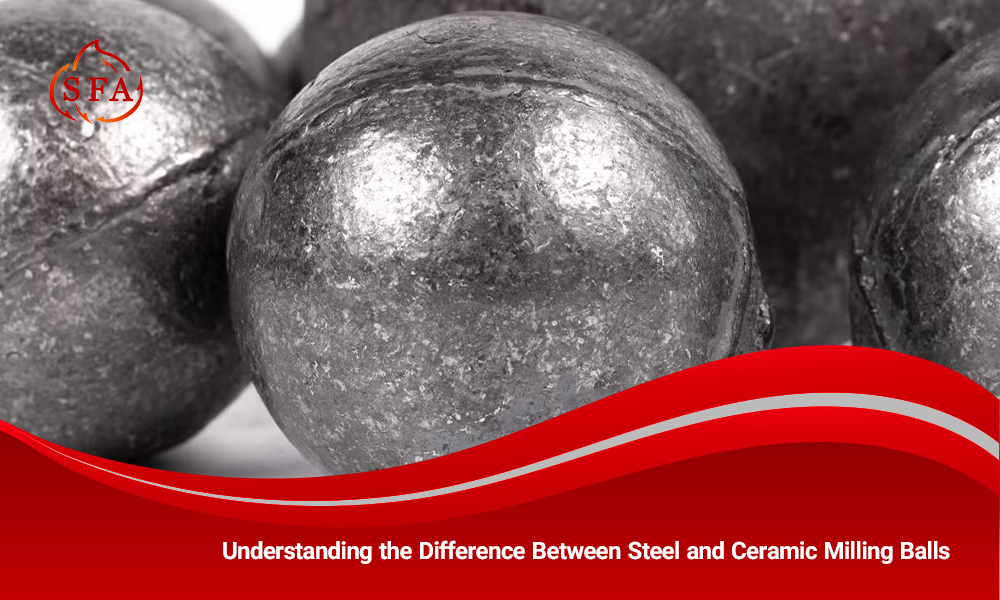

Understanding Heat Treatment for Mining-Grade Castings
Castings, as key components in mining equipment, play a very important role in the performance and efficiency of mines. Parts such as liners, shells, and rock breakers are produced by casting methods. They come into direct contact with hard, abrasive minerals and operate under very high pressure and stress.. Due to these difficult conditions, high mechanical properties and wear resistance are essential for these parts. Without the use of durable castings, various parts of mining machinery will quickly corrode and fail.
The correct selection of alloy and manufacturing process are among the effective factors in increasing the service life of these parts. For example, the selection of wear-resistant alloys and the implementation of precise heat treatment can significantly increase the service life of mining equipment. Proper heat treatment improves the required mechanical properties such as hardness and toughness, ultimately increasing the productivity of the equipment.
In the following sections of this article, the concept of heat treatment will be first reviewed, followed by a discussion of the various methods and their applications in mining parts. This article reviews how heat treatment affects the mechanical properties and durability of parts. It also covers innovations, new technologies, and key challenges in selecting the right heat treatment. Finally, it emphasizes the importance of understanding the heat treatment process for mining-grade castings. Follow us on this article from the Sepahan Foolad Atashgah website.
What is heat treatment?
Heat treatment is a controlled process in which manufacturers heat cast metals to a specific temperature, hold them at that temperature, and then cool them at a defined rate. In other words, they heat the metal part, maintain the target temperature for a set time, and then cool it in air, oil, or water. This process changes the microcrystalline structure of the metal and improves its mechanical properties.
One of the main goals of heat treatment is to optimize the mechanical properties of the part. For example, this process can increase the hardness of the part, reduce its brittleness, relieve internal stresses caused by casting, and improve its resistance to wear or corrosion. In fact, without heat treatment, a cast part may fail suddenly in the operating environment or have a short service life. In the production of most industrial and mining metal parts, manufacturers perform heat treatment after casting to achieve the required mechanical properties.
Types of heat treatment methods and their application in mineral parts
In the foundry industry, different heat treatment methods are used, depending on the alloy type and operational requirements. Some of the most common methods are:
- Annealing: In this method, the part is heated to a relatively high temperature and then cooled slowly. Annealing softens the metal, reduces internal stresses, and improves machinability. It is used especially for gray cast irons and some cast steels.
- Normalizing: The part is heated to a higher temperature than the austenitizing process and then cooled in air. Normalizing produces a uniform grain structure and increases the mechanical strength and toughness of the metal. This method is often used for carbon and low-alloy steels.
- Quenching: In this process, the heated part is quickly immersed in a cooling medium (such as water, oil, or polymer solution). Quenching significantly increases the hardness and strength of the metal, although it may also increase brittleness.
- Tempering: After quenching, the part is heated again to a lower temperature and then cooled to reduce brittleness and increase toughness. This step establishes a balance between hardness and toughness.
- Stress Relieving: This method involves heating to a temperature below the critical temperature and slowly cooling, which helps eliminate residual stresses from casting.
- Carburizing: For steel parts that require high surface hardness, it is carried out at controlled temperatures and with the help of carburizing gases to create a hard surface layer.
These methods are used separately or in combination to achieve the desired properties in various mineral parts.
The effect of heat treatment on the mechanical properties and durability of parts
Heat treatment has a profound effect on improving the mechanical properties and durability of cast parts. Manufacturers increase part hardness and improve wear resistance by using processes such as quenching, tempering, and annealing. These processes can also increase the toughness of the parts to prevent sudden failure in harsh working conditions. Parts that do not receive proper heat treatment lack sufficient impact and wear resistance, which greatly reduces their useful life. In addition to changes in hardness and strength, heat treatment reduces internal stresses caused by the casting process and creates a more uniform distribution of the microcrystalline structure. This prevents the formation of premature cracks and corrosion and increases the durability of the part. In general, heat treatment improves mechanical properties, increases durability, reduces frequent repairs, and optimizes mining equipment performance.
Click to read the article «How Foundry Innovation Boosts Efficiency in the Mining Industry».
Innovations and new technologies in heat treatment
The heat treatment industry, like many other industries, is constantly innovating and utilizing new technologies. Some of the recent important developments include:
- Vacuum Heat Treatment: Vacuum furnaces prevent oxidation of the metal surface during the process, keeping the part clean and high quality.
- Low Pressure Carburizing: This method uses lower temperatures and pressures than traditional carburizing. It hardens the surface of parts while reducing gas consumption.
- Digitalization and Smart Monitoring: Industry 4.0 technologies, such as sensors and real-time controls, allow operators to monitor and adjust heat treatment parameters accurately. This improves part uniformity and reduces costs.
- Energy Efficiency and Heat Recovery: Thermal processes consume significant energy, so new heat recovery systems and renewable energy use have been developed. For example, furnace waste heat can preheat parts or supply heat elsewhere in the plant.
- Cryogenic Treatment: Recent research explores cooling metal parts to sub-zero temperatures. This helps form hard, fine-grained structures (like fine-grained martensite) and enhances wear resistance and toughness.
These innovations help to make heat treatment more precise, efficient and of higher quality, and better meet the advanced needs of mineral parts.
Challenges and key points in choosing the right heat treatment
Choosing the right heat treatment method requires consideration of several factors. Some of the key considerations and challenges include:
- Alloy type and chemical composition: Each metal reacts differently to temperature and cooling rate. For example, carbon steels often respond well to quenching and tempering, but austenitic stainless steels typically require solution treatment and aging. A thorough understanding of the base alloy and the desired properties is critical in determining the appropriate process.
- Required mechanical properties depend on the type of stress or wear the part will face. If the part needs high hardness and wear resistance, manufacturers use methods such as quenching. For parts that require greater toughness, milder heat treatments like annealing or tempering are more suitable.
- Part dimensions and geometry: Large or thick parts cool slowly, and uneven cooling can lead to warping and uneven distribution of properties. As a result, proper thermal cycle design, use of special equipment (such as larger tanks), and precise temperature control are essential for bulky parts.
- Control of deformation and warping: Unwanted warping of parts during heat treatment is a common challenge, especially at high temperatures. The use of appropriate restraints, gentle planning of heating and cooling stages, and reasonable selection of parameters can reduce this problem to some extent.
- Energy consumption and cost: Traditional thermal processes require high energy and time consumption. For this reason, the use of energy recovery systems and consumption optimization (such as the methods discussed in the previous section) helps to reduce costs. Some new methods also require expensive equipment and careful maintenance.
In summary, operators can address these challenges and carefully choose the right methods and parameters to use heat treatment effectively. This approach improves the properties of mineral parts.
Conclusion and final summary
This article discusses the importance of heat treatment in improving the performance and longevity of mining castings. Research shows that fully understanding the heat treatment process for mining-grade castings greatly improves parts’ wear resistance, hardness, and durability. The careful selection of heat treatment methods and parameters can increase the productivity of mining equipment and reduce maintenance costs.
Technological advances in modern thermal processes, digital monitoring systems, and energy optimization help improve heat treatment quality and efficiency. Awareness of key factors, such as alloy type, part dimensions, and environmental conditions, is also essential for success. Finally, operators must thoroughly understand and correctly apply heat treatment in mining castings (Understanding Heat Treatment for Mining-Grade Castings) to ensure equipment quality and durability. For technical information, please contact our colleagues in the group and the commercial manager.


